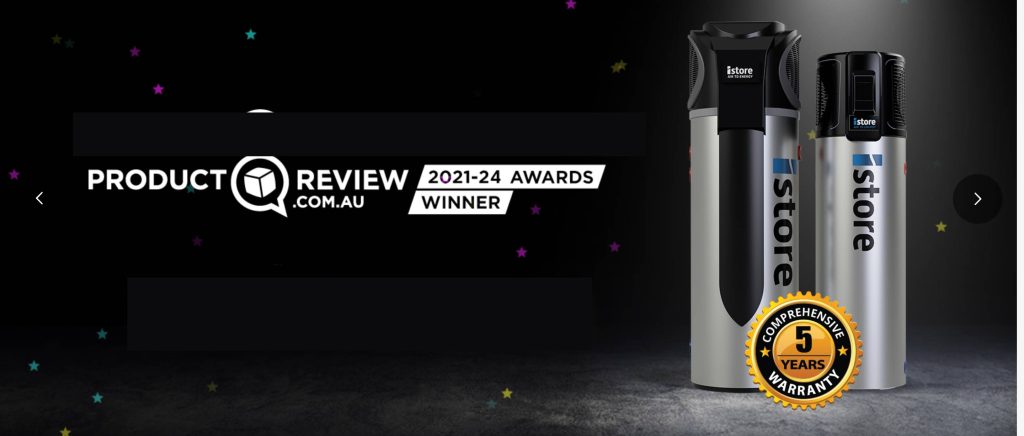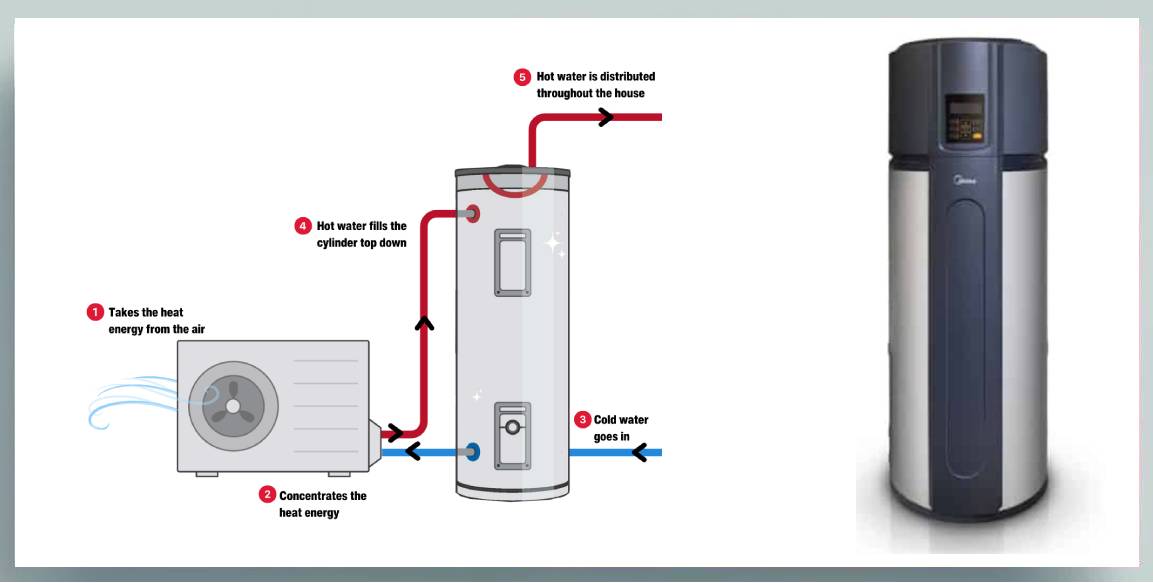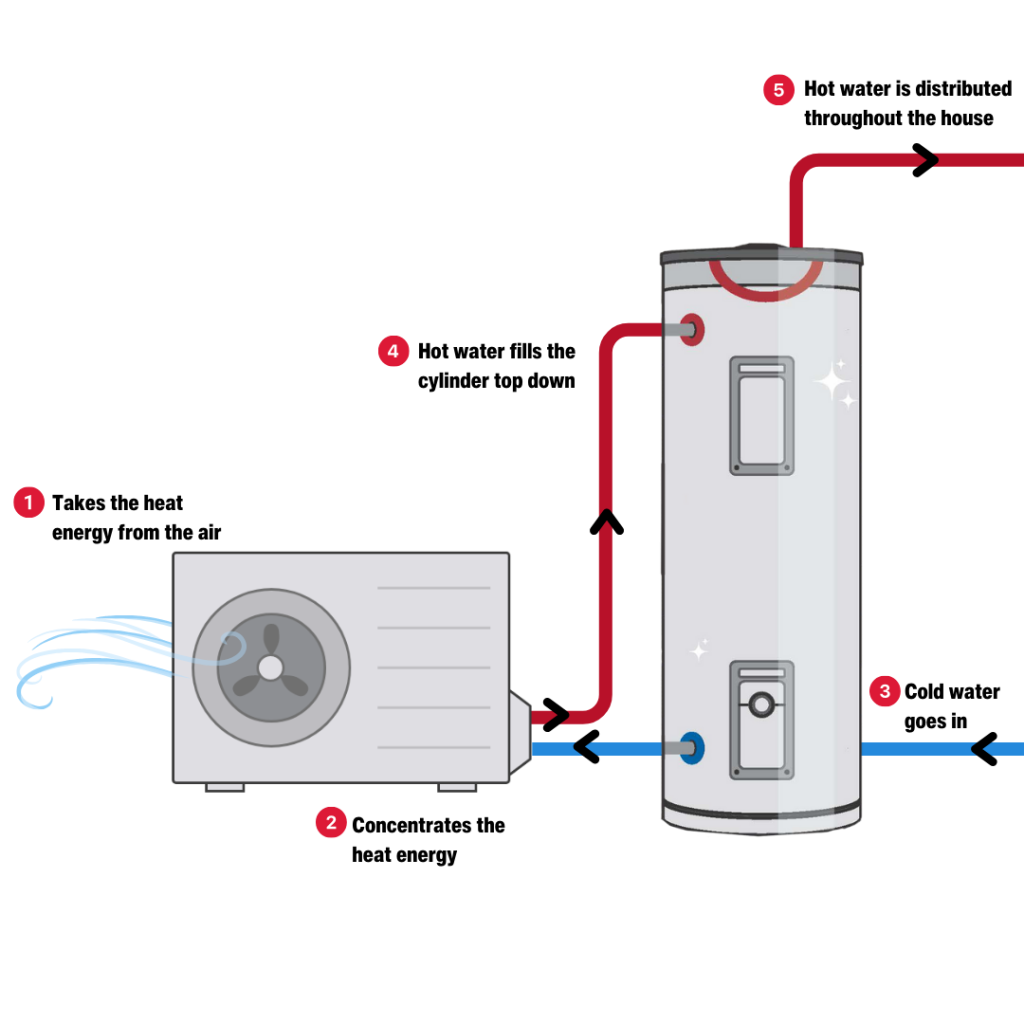
According to a 2021 research by Consumer Reference Group (CRG), approximately 28% of Australians need help to afford their energy […]

Hot water is a basic need in almost every Australian household, but it’s unbelievable how most homes get it. According to data, most Australians still rely on traditional electric and gas hot water systems despite there being a superior alternative.
As noticed by the Department of Energy, close to 50% of households in the country rely on electric water heaters. Out of the remaining ones, about 40% rely on gas water heaters.
While these methods are widely adopted across Australia, they are expensive to run and have an undesirable environmental impact.
According to the Energy Rating Site, these water heating solutions inflate typical household utility bills by up to 20% and are responsible for 20% of residential greenhouse gas emissions.
Heat pump water heaters have been designed to solve this problem.
Unlike electric or gas water heating, heat pumps rely on renewable energy.
The energy they use already exists in the air, so there is no need to create it. The units, therefore, avoid emissions normally associated with burning fossil fuels, which is safer for the planet.
Compared to electric water heating, heat pumps prove superior with a CoP of 3 – 4 as per the ACT Government.
This means they transfer more heat with less energy consumption, enabling you to save on utility costs. According to the Centre for Urban Research, you can achieve a 90% reduction in your water heating bills with heat pumps!
But how exactly do they work to provide Australian homes with hot water? Well, read on as we explain the nitty-gritty details of this technology.
Heat pump water heaters extract existing ambient heat from the air and transfer it to the cold water stored in tanks to make it warmer. This process requires various components of heat pump water heaters to play different roles to achieve water heating.

Below are the various heat components and their roles in facilitating domestic water heating.
The Fan System
The fan system starts the entire process by pumping more air into the system so that more ambient heat is extracted.
In most high-end heat pumps, the fan system is made of DC motors as they are known to consume less power and have reduced noise compared to AC motors.
Evaporator Coil
When the fan system blows air into the heat pump system, the first place this air carrying ambient heat goes is the evaporator coil.
Inside the evaporator coil, a cold refrigerant liquid flows.
The temperature of this liquid is lower than that of the air blown over the evaporator coil. Due to this temperature difference, heat flows from the air to the refrigerant and warms it.
The Compressor
The compressor receives the warm refrigerant from the evaporator coil. It then compresses the refrigerant, further increasing its temperature and pressure.
With the increase in temperature and pressure, the relatively low-temperature liquid now transforms into a hot gaseous state, which is then pumped into the condenser.
The Condenser
The condenser coil is where the magic happens to generate hot water. This component sits inside the tank with cold water, waiting to be heated.
After the compressor, the hot refrigerant gas now reaches the condenser coil. The coil is in contact with the cold water.
Again, the principles of thermodynamics apply.
Heat flows from the hot refrigerant to the cold water, increasing the temperature of the cold water. Following that, the heated water is stored warm and ready for use.
The Expansion Valve
After losing its heat to the water stored in the tank, the refrigerant is then pumped to the expansion valve. Here, the refrigerant is allowed to lower the temperature and reduce pressure, thus transforming back into a liquid state.
Once cooled, the refrigerant liquid flows back to the evaporator to extract more heat from the air, and the process keeps repeating to ensure consistent heating.
The Storage Tank
Just as you can tell from its name, the storage tank is where water is stored for heating.
Initially, it holds cold water, but as the heating cycle repeats, the water becomes warm and is stored for use as needed.
The storage tanks can be of different sizes depending on the brand you choose.
Regardless, they all feature proper insulation to ensure minimal heat loss, which is one of the key advantages of heat pumps.
The Thermostat
The thermostat lets you set the desired water temperature. Once set, it keeps monitoring to ensure the temperature neither drops below nor rises much higher than your settings.
If the preset temperature is reached, the system automatically shuts down.
When it goes below the set temperature, the system restarts automatically. This ensures your heat pump doesn’t work when it doesn’t need to and that your water remains warm.
The Backup Heating Element
While heat pumps are meant to eliminate electric heating, sometimes the need for hot water surpasses their capabilities to deliver. For example, when you have multiple family members using hot water at the same time.
In such cases, some models offer an optional backup heating element that steps in to meet the increased demand.
This feature may not be available in all models, so pay attention to it when buying.
Now we’ve said heat pump water heaters extract heat from the air. So, whether they can work in colder climates is a key question.
There has been a common belief that these units may struggle in colder environments. But is it true? NO. It is not and cannot be true.
Heat pumps are designed to work even in colder regions.
According to the DCCEEW, high-end heat pumps will function in temperatures as low as -15 degrees Celsius. That is possible because ambient heat is still available in the air, and heat pumps can extract and transfer it even at this low temperature.
However, it is important to mention that below -10 degrees Celsius, the efficiency and Coefficient of Performance of some heat pumps can be reduced.
So always check the specification of the model before buying to make sure it can function optimally within your area’s weather conditions.
Yes, the operation of a heat pump is that simple. As you saw above, no part of the process requires burning fossil fuels, which is great for the environment.
In addition, they don’t rely on electric heating elements; those are just included in some models as a backup. Reducing reliance on electricity means huge cost savings over the unit’s lifespan.
And guess what?
The Australian government and local authorities are now financing heat pumps.
So, the high initial costs should no longer hold you back. Contact us at Hot Water Hub, and we can help you purchase and install heat pumps affordably with these incentives and rebates.